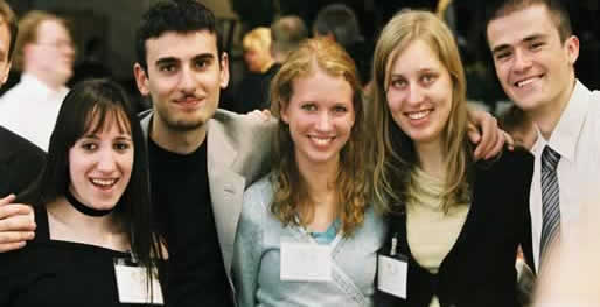Europeans have Three Ancestors, Researchers Find
| Paula Marie Navarra | | Sep 18, 2014 01:46 PM EDT |
Researchers from the University of Tubingen in Germany have found out that Europeans do not only have two ancient ancestors but three and possibly more.
The Ancient North Eurasians were one of the ancestors of the present-day Europeans and the people that travelled from the Bering Strait to America 15,000 years ago.
Like Us on Facebook
David Reich, one of the researchers, said that previous researchers believe that there were only two ancestors that lived in Europe.
However, their findings proved otherwise after researchers found a third ancestor of the Europeans that can explain the connection between Europeans and Native Americans.
Iosif Lazaridis, one of the researchers, said that Ancient North Eurasians composed 20 percent of Europeans that lived in Caucasus and Near East.
This is because of the transformation that took place in West Eurasia after farming was discovered, Lozaridis added.
According to researchers, Ancient North Eurasians were considered a ghost population, an ancient group only known for the traces that they left in the DNA of present-day Europeans.
Through their research, they were able to analyze ancient DNA samples that did not only showed them of the third European ancestor but also opened the possibility for more ancestors that contributed to the Europeans' genetic profile.
Aside from the Ancient North Eurasian ancestors, researchers also discovered the Basal Eurasians.
Researchers said that Australian Aborigines, New Guineans, South Indians, Native Americans have Basal Eurasian lineage.
They admitted that they are only starting to understand the genetic relationships of the European ancestors.
They said that they are keen on finding more about European ancestors through gathering of genetic data that came from ancient human remains.
To date, researchers are focusing on knowing on how present-day people got to where they are now.
They said that they can know this through ancient DNA sequencing that allows researchers to go back to places and periods where important demographic events occurred.
©2015 Chinatopix All rights reserved. Do not reproduce without permission
EDITOR'S PICKS
-

Did the Trump administration just announce plans for a trade war with ‘hostile’ China and Russia?
-

US Senate passes Taiwan travel bill slammed by China
-

As Yan Sihong’s family grieves, here are other Chinese students who went missing abroad. Some have never been found
-

Beijing blasts Western critics who ‘smear China’ with the term sharp power
-

China Envoy Seeks to Defuse Tensions With U.S. as a Trade War Brews
-

Singapore's Deputy PM Provides Bitcoin Vote of Confidence Amid China's Blanket Bans
-

China warns investors over risks in overseas virtual currency trading
-

Chinese government most trustworthy: survey
-

Kashima Antlers On Course For Back-To-Back Titles
MOST POPULAR
LATEST NEWS
Zhou Yongkang: China's Former Security Chief Sentenced to Life in Prison

China's former Chief of the Ministry of Public Security, Zhou Yongkang, has been given a life sentence after he was found guilty of abusing his office, bribery and deliberately ... Full Article
TRENDING STORY

China Pork Prices Expected to Stabilize As The Supplies Recover

Elephone P9000 Smartphone is now on Sale on Amazon India

There's a Big Chance Cliffhangers Won't Still Be Resolved When Grey's Anatomy Season 13 Returns

Supreme Court Ruled on Samsung vs Apple Dispute for Patent Infringement

Microsoft Surface Pro 5 Rumors and Release Date: What is the Latest?










